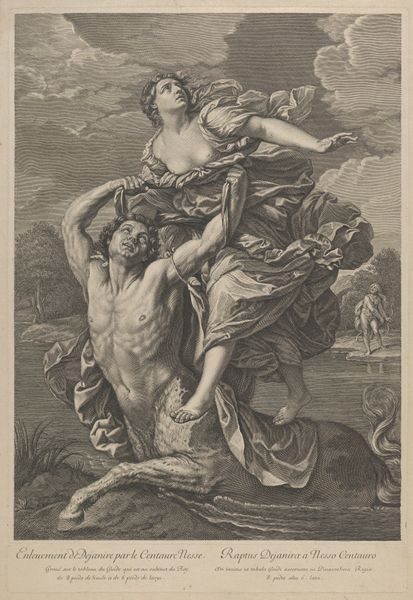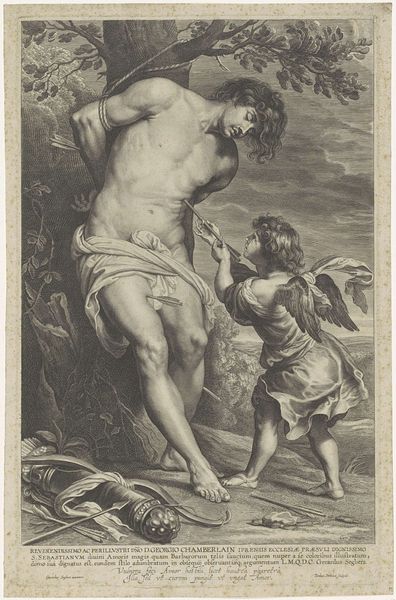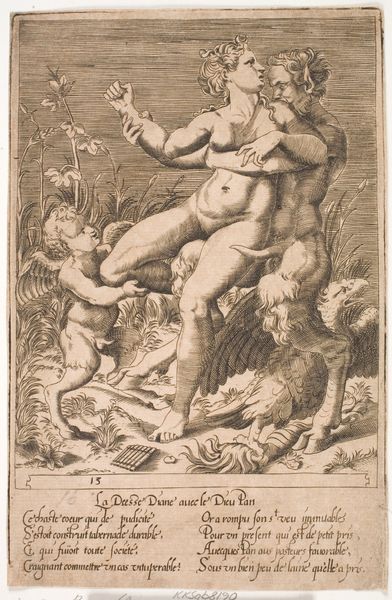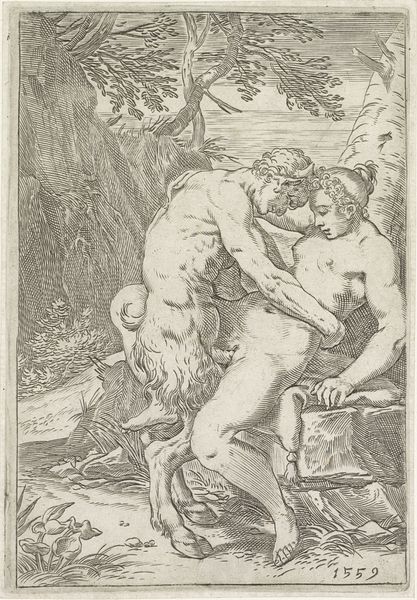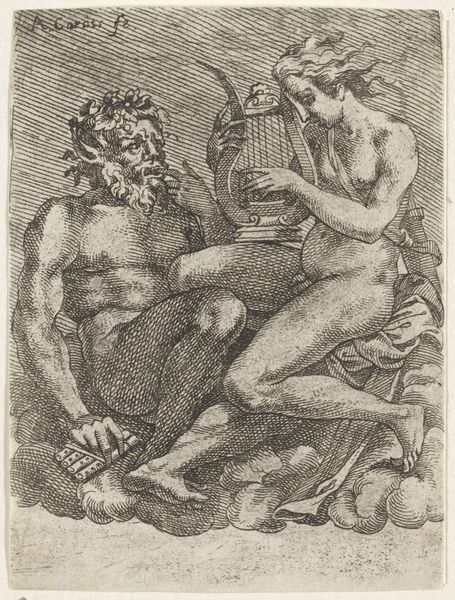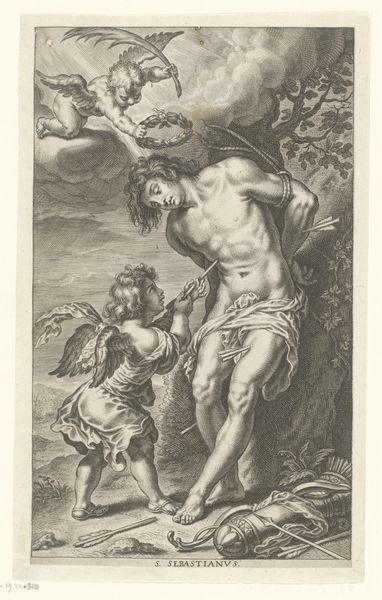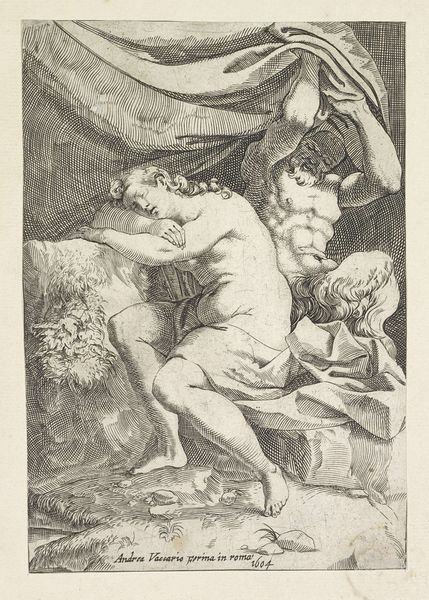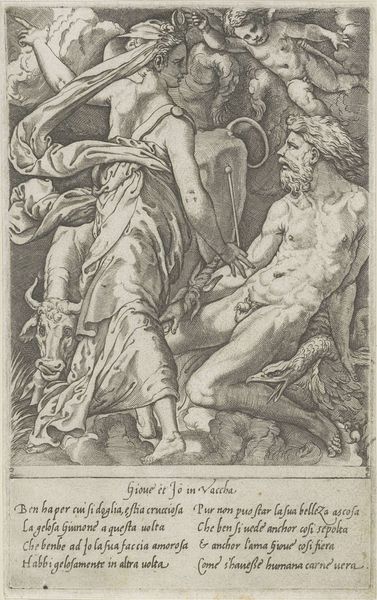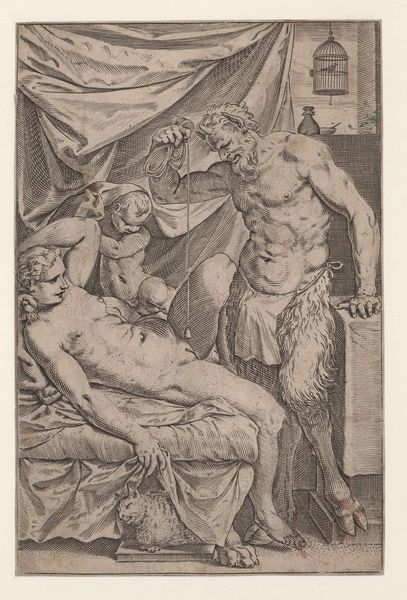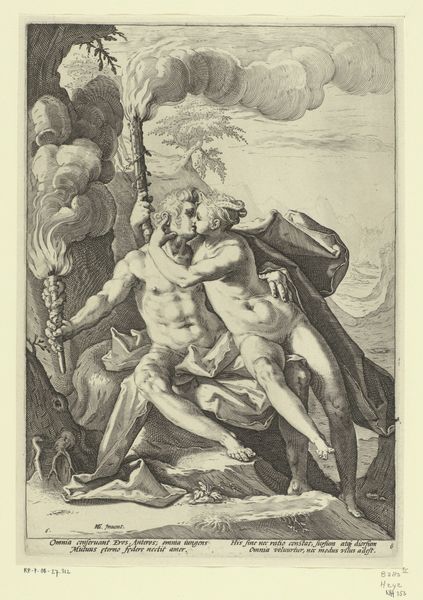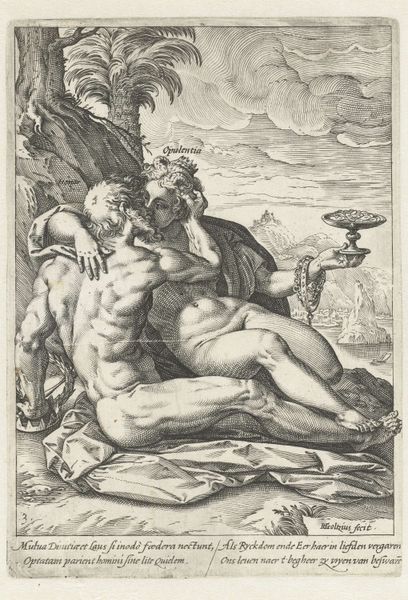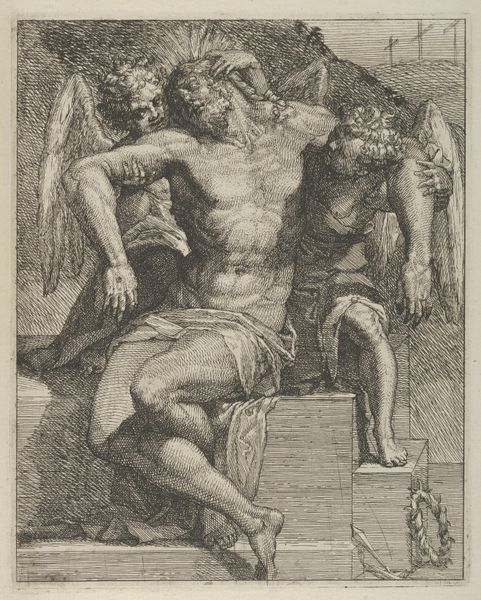
Two lovers, a man pulling a woman toward a bed, from "The Loves of the Gods" 1531 - 1560
0:00
0:00
drawing, print, engraving
#
drawing
# print
#
figuration
#
female-nude
#
history-painting
#
italian-renaissance
#
nude
#
engraving
#
male-nude
#
erotic-art
Dimensions: sheet: 5 1/2 x 4 3/16 in. (14 x 10.7 cm)
Copyright: Public Domain
Curator: Oh, the drama! Look at this, Giulio Bonasone’s engraving, sometime between 1531 and 1560, called "Two lovers, a man pulling a woman toward a bed, from "The Loves of the Gods." Editor: It’s... well, intense. All those tangled limbs and that aggressively suggestive title. Is that fabric or a ghost hovering over them? It gives me the shivers, a sort of claustrophobic anxiety. Curator: It's certainly a far cry from some idealized Renaissance nude. The musculature on both figures is powerfully rendered, almost exaggerated. The lines of the engraving create a flurry of textures, drawing your eye to every ripple of skin. There’s labor involved in creating it, and physical strain visible on each body. Editor: Precisely! That texture, that intensity—you see the process, don’t you? All those tiny lines, etched by hand, reproducing something classical yet utterly charged with a human energy— almost palpable labor, I mean! The original drawing might have been intended to depict divine figures but the human element is hard to avoid! Curator: The 'loves of the gods' were rarely depicted as serene affairs. There's something almost violent in the man’s pull and her hesitant stance. Maybe the artist meant to depict a struggle for power. The cherubic figures looking on in the upper right contribute to that sense of watching. Editor: And consider Bonasone's position—reproducing someone else’s design! He's essentially a craftsman translating an idea. That adds layers of meaning. This print becomes about the act of reproduction and accessibility. More people would experience “art” through engravings such as these! The material itself, this piece of paper, becomes so democratic compared to fresco, canvas, or any work of art from that time! Curator: Absolutely. It becomes less about an elite creation and more about mass communication. Though I confess, that doesn't detract from the suggestive energy that still comes from viewing the piece. Those crossed lines that give definition to both figures almost mimic tangled bedding. Editor: Still, the power of reproduction shifts our perspective. Bonasone wasn't just making art, but manufacturing and distributing ideas. Something too frequently absent when analyzing prints like these. Curator: That’s what I love about this artwork: it makes us wonder at the original intention behind its production. To witness gods indulging desires or a labor act, transforming art itself. It leaves you wanting to contemplate what’s really happening on the image beyond the drama. Editor: Indeed, it transforms our idea of art’s traditional and accepted borders while asking essential and timely questions. Not only do we witness, but are urged to examine production!
Comments
No comments
Be the first to comment and join the conversation on the ultimate creative platform.
